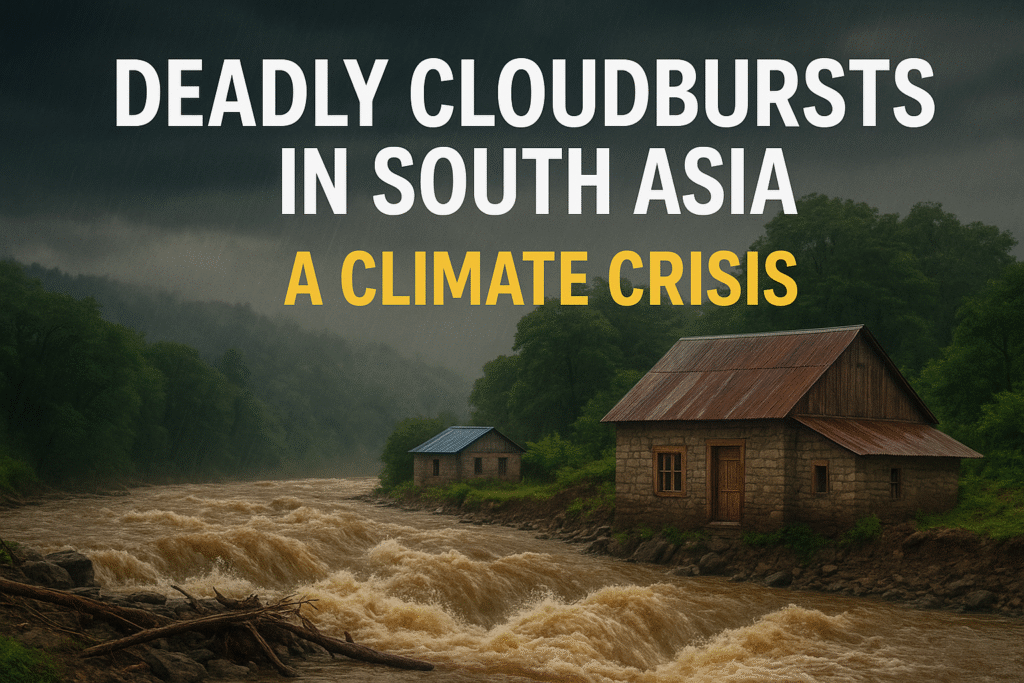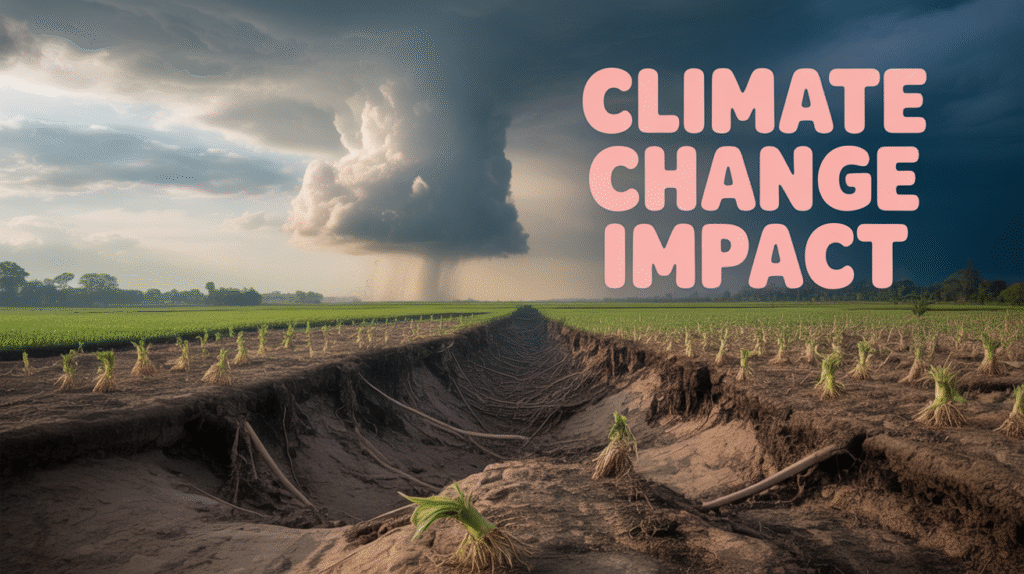Introduction:
In 2025, Cloudbursts in South Asia have become a growing threat, killing hundreds and displacing thousands. From Pakistan to India and Nepal, sudden monsoon floods are destroying homes, crops, and infrastructure. But why are these deadly cloudbursts becoming more frequent? The answer lies in the accelerating climate crisis.

What Are Cloudbursts?
A cloudburst is an intense rainfall event where more than 100 mm of rain falls within an hour. This rapid downpour causes sudden flash floods, overwhelming rivers, valleys, and towns. In mountainous regions like the Himalayas, the impact is even worse, as glacial melt and steep terrain accelerate floodwaters.
Why Cloudbursts in South Asia Are Becoming Deadlier:
The rise of cloudbursts in South Asia is directly linked to climate change:
- Hotter air holds more moisture, leading to heavier rainfall.
- Melting glaciers increase water flow in rivers.
- Erratic monsoons trigger unpredictable and extreme storms.
According to experts, South Asia has become one of the world’s biggest climate change hotspots, where every year floods and heatwaves grow stronger.

Monsoon Floods 2025: Recent Disasters:
- Pakistan (Khyber Pakhtunkhwa): Entire villages washed away by flash floods.
- India (Himachal Pradesh & Kashmir): More than 100 lives lost in less than a week.
- Nepal & Bangladesh: Thousands forced into relief camps as rivers overflow.
Global Impact of South Asian Floods:
The crisis is not limited to South Asia—its effects are global:
- Food Security Threat: Rice, wheat, and cotton crops destroyed, affecting world markets.
- Climate Refugees: Millions forced to migrate, creating humanitarian challenges.
- Economic Burden: Billions lost in infrastructure damage, raising global concerns.
What Can Be Done?
To reduce the deadly impact of cloudbursts and protect communities:
- Governments should invest in early warning systems to ensure timely alerts.
- Authorities must build flood-resilient infrastructure in vulnerable regions.
- Global cooperation is crucial to cut carbon emissions and minimize the climate change impact.
By focusing on cloudburst preparedness now, we can save lives and reduce future destruction.
Conclusion:
The rise of cloudbursts in South Asia signals a global climate crisis. Urgent action is necessary to protect millions of lives and reduce the devastating climate change impact worldwide. By addressing these extreme weather events now, communities can better adapt and prevent further destruction.







Leave a Reply